Concluding the series on the Big Four CMEs, Brian Sharpe examines the career of Robert Riddles who became CME of British Railways after Nationalisation and undoubtedly prolonged the steam era in Britain with a series of steam designs that many argue should never have been built.
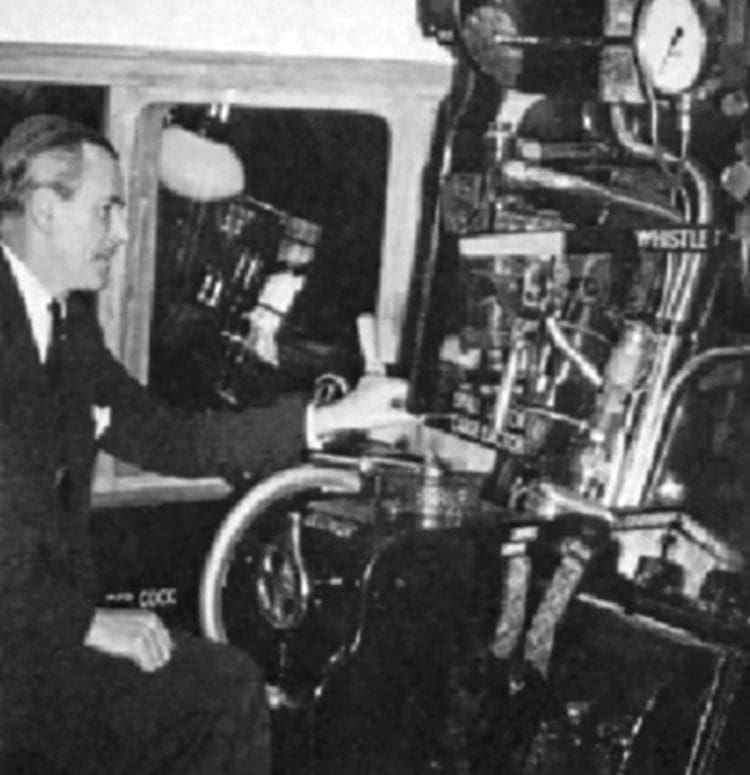
Robert Riddles was born in 1892 and joined the LNWR at Crewe works as a premium apprentice in 1909, completing his apprenticeship in 1913. While attending the Mechanics Institute classes he took a course in electrical engineering, feeling there would be a future for electric traction.
During the First World War he served with the Royal Engineers, mainly in France, during which time he was badly wounded.
Enjoy more Heritage Railway reading in the four-weekly magazine.
Click here to subscribe & save.
He returned to the LNWR at Crewe, and in 1920 became the bricks and mortar assistant with responsibility for the new erecting shop. When work on this was stopped, Riddles was placed in charge of a small production progress department and was sent to Horwich to study the methods used by the L&Y.
For more, like us on Facebook, or follow us on Twitter here.
This was to prove helpful in furthering Riddles’ career and he was to have significant influence in the reorganisation of Crewe works which took place between 1925 and 1927 after the Grouping. In 1923 the LNWR had become part of the LMS and on completion of the work at Crewe, Riddles was sent to the former Midland works at Derby to supervise a similar programme. He was supported in this process by Henry Ivatt who was the works manager at Derby.
During the General Strike in 1926, Riddles volunteered as a driver, taking trains from Crewe to Manchester and Carlisle. The experience gained made him almost unique among CMEs; The practical knowledge gained was of great assistance to Riddles in his future design work.
For example, it was the difference experienced in driving a Prince of Wales 4-6-0 and a George the Fifth 4-4-0 which convinced Riddles of the advantage of six coupled wheels.
Riddles was a steam enthusiast and although he undoubtedly learnt much from driving engines, equally he appears to have got quite a thrill from the experience.
In 1933 Riddles moved to Euston to become locomotive assistant to the new chief mechanical engineer, Sir William Stanier, and in 1935 became Stanier’s principal assistant.
In this position, Riddles was responsible for much of the design work on Stanier’s Princess Coronation Pacific. Riddles and Stanier developed a close relationship, and there is little doubt that this was of a great benefit to LMS locomotive design during the 1930s.
It has been alleged by some experts that Riddles was responsible for the design of the Princess Coronations and certainly Stanier was in India at the time of their construction, but others claim there is no evidence for this.
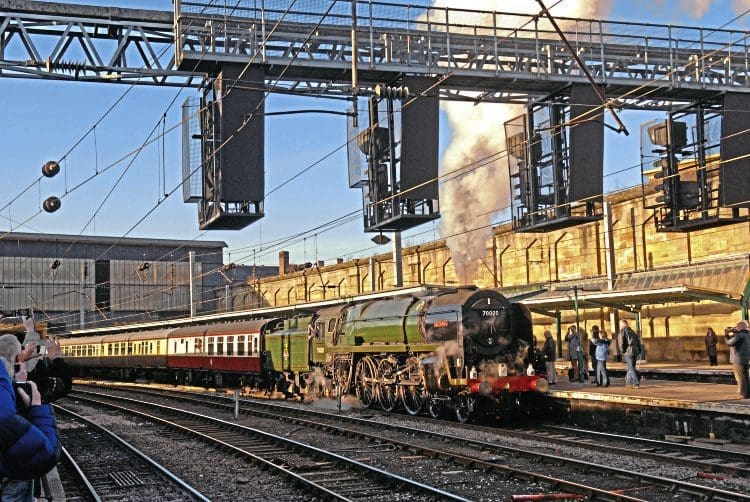
However, Riddles did write about the infamous press run of No. 6220 Coronation in 1937 and his description of events was particularly graphic.
Prospects damaged
This vivid description of the train achieving a speed of 114 mph much too close to Crewe station for comfort is considered to have damaged Riddles’ prospects on the LMS.
The top speed was attained immediately south of Crewe and the train entered the station at way above the permitted speed. Crockery was broken in the dining car and there was some damage to the points, but Riddles treated it as a great adventure.
In 1937 Riddles had moved to Glasgow as mechanical and electrical engineer – Scotland, but at this time Charles Fairburn was appointed as Stanier’s deputy – much to Riddles’ disappointment – and this backward step in his career could have been partly the result of the Coronation episode.
When No. 6229 Duchess of Hamilton, masquerading as Coronation, subsequently toured America in 1939, Riddles also described this trip with great enthusiasm and again in vivid detail. The rostered driver Fred Bishop was ill and Riddles ended up driving the train on most of its tour. Fred Bishop was very complimentary about Riddles’ driving skills.
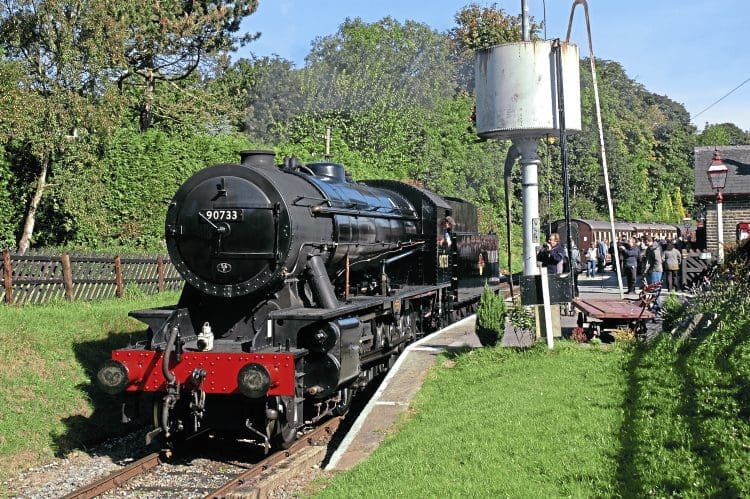
In 1939 with the Second World War having just started, Riddles moved to the Ministry of Supply, becoming director of transportation equipment, in which position he is credited with his first locomotive designs; the WD Austerity 2-8-0 and 2-10-0s.
The Ministry of Supply had adopted the Stanier 8F as the WD standard type and the three other Big Four companies joined in their production, but they were expensive. What was needed was something which could be produced in quantity, cheaply and quickly. Riddles’ WD 2-8-0 was the answer.
For more, like us on Facebook, or follow us on Twitter here.
Riddles designed three very successful ‘austerity’ designs. As well as the 2-8-0 and 2-10-0, there was the Hunslet-based 0-6-0ST. These were designed to be cheap and easy to build and maintain, and to burn indifferent coal.
They also proved powerful for their size, and could run on poor quality track. All three designs were used extensively in the UK and in Europe. The LNER used many of the 0-6-0STs (J94) and 2-8-0s during and after hostilities.
The 2-8-0 was quite a tidy design for an ‘austerity’ locomotive but the taper boiler and Belpaire firebox of the 8F was replaced by a parallel boiler and round-topped firebox, while castings and forgings were replaced by fabrication.

The railway companies knew that they would inherit the WD engines once hostilities had ceased, and would have much preferred these to be Stanier 8Fs than Riddles’ ones, but it was the ‘Austerities’ that they were instructed to build.
Read more News and Features in Issue 244 of HR – on sale now! Any archive enquiries? Contact Jane Skayman on 01507 529423 or email [email protected]
Adhesive quality
When Riddles went on to produce his 2-10-0 version, it was with the variation of a wide firebox rather than the narrow firebox of the 2-8-0. Despite the desire to reduce costs and steam on poor quality coal, copper was still available for all the 2-8-0s, but the 2-10-0’s fireboxes were steel.
Surprisingly, the two types were of virtually identical power, although the 2-10-0s had much better adhesion; the 2-8-0s being surprisingly poor in this respect.
It was the LNER which obtained the 2-8-0s in large numbers after the war, classifying them O7. They were of course inherited by BR and the 732 engines gave good service on slow, heavy freight traffic almost to the end of steam.

BR did eventually get the opportunity to purchase 25 of the 2-10-0s, which found work in Scotland.
In 1943 Riddles moved to the post of chief stores superintendent at the LMS, and on Fairburn’s death in 1944 he applied for the position of chief mechanical engineer, but this time the job went to George Ivatt, with Riddles being promoted to vice-president of the LMS.
On the creation of the Railway Executive in 1947 in preparation for the Nationalisation of the railways in 1948, Riddles was appointed member of the Railway Executive for mechanical and electrical engineering.
He had two principal assistants, both of whom were also former LMS men: Roland C Bond, chief officer (locomotive construction and maintenance), and E S Cox, executive officer (design). The duties of these three effectively covered the old post of chief mechanical engineer.
For more, like us on Facebook, or follow us on Twitter here.
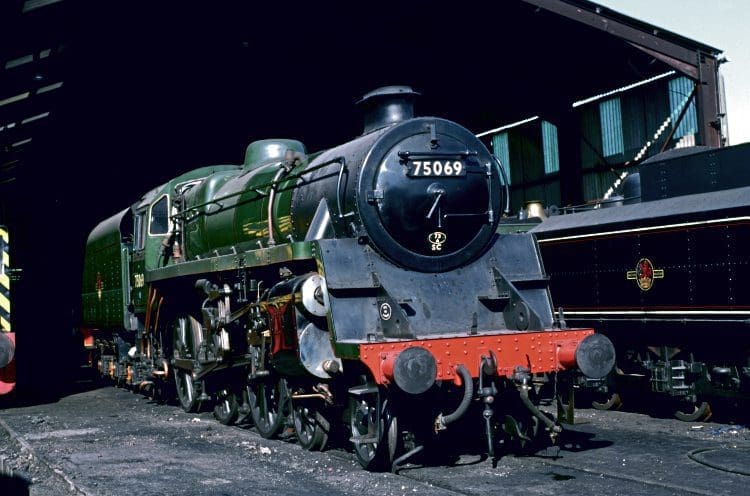
In this post Riddles was able to take the decision to continue the construction of steam locomotives, on the basis that it was not worth changing to diesel traction when the ultimate aim was electrification.
His selection of two colleagues from the LMS as his assistants rather than men from Swindon, Eastleigh or Doncaster, clearly meant that LMS thinking would predominate when it came to BR steam locomotive design.
Riddles was responsible for organising the well-known ‘interchange trials’ of 1948. This happened at a time when the LMS diesels, the first of which had appeared just before Nationalisation, were already starting to prove themselves in service.
George Ivatt, who had supervised their introduction and been part of the decision by the LMS to pursue dieselisation of main line services, was still involved as CME of the London Midland Region and must have had grave misgivings about the direction being taken by Riddles, with whom he had worked for many years.
Standard look
Riddles had another major influence on the appearance of BR’s steam fleet which was perhaps never fully documented. As well as the Locomotive Exchanges, a more peripheral sideshow was the establishment of a ‘standard’ livery for BR’s steam fleet.

Roland Bond, one of Riddles’ deputies, was ex-Derby and favoured red, but Riddles was a Crewe man, brought up on the LNWR; he was in charge and took the oft-quoted Henry Ford view that you can have “any colour you like as long as it is black”.
Engines were quickly painted in various possible liveries, mostly green, and paraded in front of the executive at Marylebone. They were mostly LMS 5MT 4-6-0s and not exactly in showroom condition.
At the end of the performance though, Riddles admitted that he had prepared another engine if the chairman would be interested, but it was not green, nor had this particular scheme even been considered.
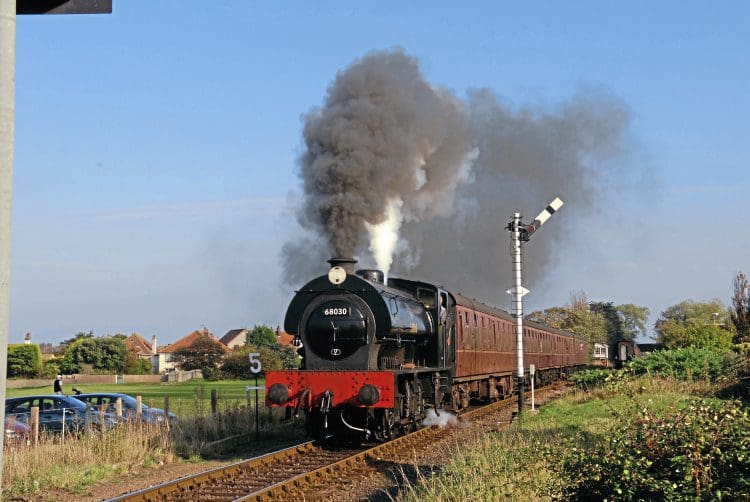
Another LMS 5MT appeared, which Crewe had turned out in immaculate fully-lined LNWR black. It stole the show, and Riddles is quoted as saying: “I got more than 19,000 out of 20,000 locomotives painted black, which was what I had wanted all along!’
Although blue was adopted for express engines, and Brunswick green for exclusively passenger engines, even the first Britannia was initially turned out in plain black, and Princess Coronation Pacifics were seen in black with LNWR-style lining for a while.
Riddles thought that Britain’s railways would use electric traction in the long term, and steam traction in the intermediate. The new diesels were not the equal of a Class 8 Pacific. With his team, he set about designing and building a set of 12 standard locomotive designs.
Officially these incorporated the best practices of all of the ‘Big Four’ railway companies, as theoretically established by the interchange trials, with the work shared between the existing former company drawing offices, but inevitably, LMS practices did tend to predominate.
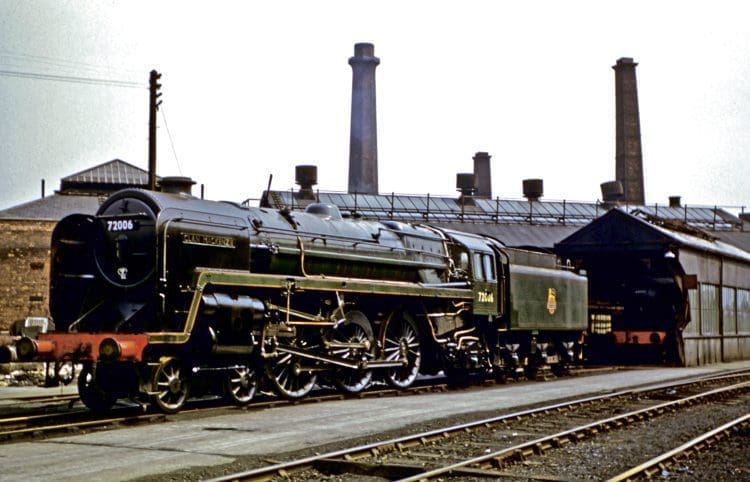
In fact Ivatt had planned a standard range of six steam classes for the LMS just before Nationalisation. Like Riddles’ earlier austerity designs, his BR Standards were also designed for simplicity, ease of maintenance, and the ability to burn poor quality coal, with the emphasis almost exclusively on two cylinder designs.
Although there was much LMS influence in the Standards it was very much an Ivatt LMS influence and in this respect, was as much big US mass-production as prewar Stanier style and elegance.
Although the BR Standards were generally a success, there has been criticism of the policy pursued by Riddles. There were perfectly good engines still being produced by BR to Big Four designs and many of the Standard engines were not really necessary.
BR was also slow to implement modern traction, especially DMUs, and to extend the LNER’s main line electrification programme.
For more, like us on Facebook, or follow us on Twitter here.
Read more News and Features in Issue 244 of HR – on sale now! Any archive enquiries? Contact Jane Skayman on 01507 529423 or email [email protected]
A lot has been written about the Standard designs, some writers even going as far as calling Riddles’ locomotive policy complete madness.
The problem was that although the British Transport Commission wished to pursue the modern traction options, Riddles did not see eye-to-eye with his employers and the BTC had a lot of other problems to deal with in the newly-nationalised industry.
Riddles was an exceptional manager of people who got to know as many of the middle and junior staff as possible and had the ability to get people to work together.
He was handsome and charming; he knew his job and he would put his arguments forward quite forcefully. Perhaps inevitably he did not get on with everyone and was somewhat intolerant of members of the Railway Executive and the BTC who he considered knew less than he did yet challenged some of his decisions.
Riddles tended to disagree with Oliver Bulleid, whose ideas on locomotive design were rather different to his.
Riddles failed to pursue the pioneer diesel-electric work of Fairburn, Ivatt and Bulleid and the executive abandoned the LNER’s plan to introduce 25 1600hp diesels for trials on the ECML.
Riddles managed to prove to the executive that diesels were too expensive relative to new steam engines. In all, 2537 new steam locomotives were built after Nationalisation, and only 999 of these were Riddles’ Standards.
Riddles possibly carried his enthusiasm for steam much too far. The executive formulated plans for lightweight DMUs for branch lines and local services, but Riddles’ preference was to use push-pull steam trains, and fortunately for him most members of the executive were so involved in their own jobs that he could simply say: “I’m going to do this,” and did it. He is quoted as saying: “I think we were left a lot to our own devices.”
Riddles was a steam enthusiast, and no one gets into the position of CME – particularly of a newly-formed national railway company; almost certainly the last in a line of railway engineers from Stephenson through Webb, Churchward, Gresley and Stanier – without having an ego, and a desire to design and build memorable steam engines.
Maybe the executive should have stopped him but its members were clearly struggling with establishing a workable management structure in the brave new world of a Nationalised system, and Riddles seized his opportunity. Who could really blame him?
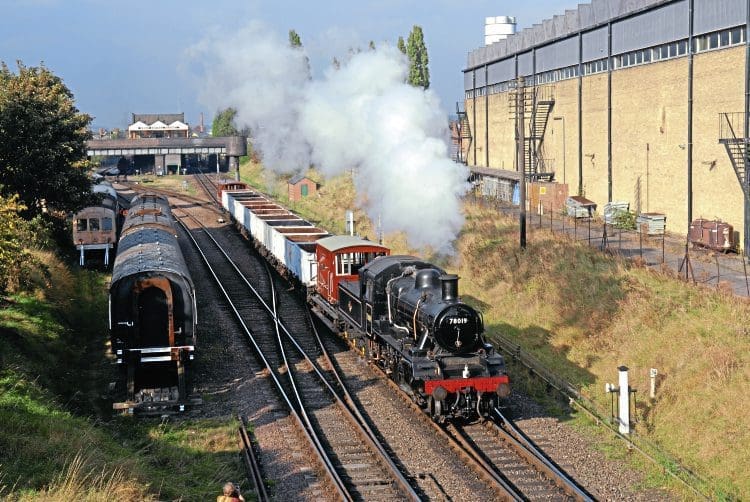
Riddles did however have charge of electric traction, with an electrical engineer under him. At the end of his railway career, it was Riddles’ suggestion that initiated the trials of 50-cycle traction on the Morecambe – Heysham line, prompted by his belief that this was the real way forward rather than existing dc systems and diesel traction, and this was a fitting finale to his early studies in electrification at Crewe.
Britannia Pacific
The first BR Standard design to emerge was a Class 7 two-cylindered Pacific, designed at Derby in 1951.
No such thing had ever been seen in Britain before and there was little need for them except on the Great Eastern lines. A few went to the WR to supplement the Castles but the region generally hated them.
Two for internal BR political reasons went to the Southern Region and worked the ‘Golden Arrow’ to Dover. The LMR had a few spread around the region, and a handful went to Scotland.
If steam had lasted another 40 years, hundreds may have been produced and maybe they would have ultimately displaced Castles, Bulleid light Pacifics, Royal Scots and LNER V2s, reducing operating and maintenance costs, but it was never going to happen.

The choice of the name Britannia for the first of the new Pacifics reflected Riddles’ affection for the LNWR where he had started his railway career. It did mean renaming the LMS Jubilee which already carried the name though.
They had 6ft 2in driving wheels, following Bulleid’s Pacifics and Peppercorn’s LNER A2s, which had proved that this was no obstacle to high speed performance.
The Britannias revolutionised the GE main line, but only for 10 years, and once away from East Anglia, they moved around various sheds gradually becoming concentrated on the LMR, where they became the last working British Pacifics, but they had ridiculously short lives on the front line services they were designed for.
5MT 4-6-0
The 5MT 4-6-0, designed at Doncaster in 1951, was very obviously a Stanier ‘Black Five’ but with 6ft 2in, rather than 6ft driving wheels. They were spread right across the regions, although the ER did not want any as it continued to churn out Thompson’s B1 4-6-0s.
The design work was carried out at Doncaster but the bulk of the construction was done at Derby. The locomotive featured a BR standard boiler very similar in dimensions to the ones on the ‘Black Fives’, but made from manganese steel instead of nickel steel.
The most obvious visible sign that ease of maintenance was a priority, was the high running plate, well clear of the driving wheels, a feature of all but the smallest of the Standard range.
The first of the class, 73000, was outshopped from Derby in April 1951 and 30 were in service by January 1952.
There was then a gap in construction before Derby resumed building its remaining 100 engines. 42 were built at Doncaster, starting in August 1955 and finishing in May 1957, with Derby’s last engine following a month later. Thirty engines, Nos. 73125 to 73154, were built with Caprotti valve gear and poppet valves.
4MT 4-6-0
As well as the 5MT 4-6-0, Riddles designed 4MT classes; a 4-6-0 and a 2-6-4T. Design work was done at Brighton but with help from Swindon, Derby and Doncaster. Construction of the 4-6-0 was at the BR Swindon works. These engines were the size of the GWR Manor 4-6-0s but designed to have much greater route availability than either the Manor or the Standard 5MT.
Eighty of these engines were built; many for the WR, but some went to the LMR, and the later batches to the SR, with bigger tenders because of the lack of water troughs.
Some were given double chimneys which improved performance and economy but was never extended to the whole class. The 4-6-0s and 2-6-4Ts used the same running gear and substantially the same firebox, smokebox and boiler, although the boiler barrel was increased in length by 9 inches on the tender engines. The leading bogie was identical to the Standard 5MT 4-6-0, but the driving wheels were 5ft 8in as opposed to 6ft 2in.
4MT 2-6-4T
Designed at Brighton, these were a tank version of the 4MT 4-6-0. 155 were built between 1951 and 1956, mostly in Brighton with small batches in Derby and Doncaster.
They were shared between the SR, LMR and Scottish Region, with a few on the North Eastern Region. The WR did not need them as it had ample 2-6-2Ts.
After Nationalisation, the SR had built some LMS Fairburn 2-6-4Ts for its own use, replacing much older tank engines but once the Standard 2-6-4Ts came on stream these replaced the LMS-designed ones on the SR.
They became particularly associated with the London, Tilbury & Southend line, until it was electrified in 1962, and with Glasgow’s suburban services.
The Standard Class 4MT tanks were more handsome in appearance than their LMS predecessors, and were well liked by their crews for their comfortable cabs, free running, good steaming and economical operation.
They performed their duties well but were very quickly replaced by more modern traction on the kind of duties they were designed for. In fact an order for further engines was cancelled as it was becoming clear they would not be needed.
Clan Pacific
Designed at Derby in 1952, only 10 of these Class 6 two-cylindered Pacifics were built, at Crewe, and are considered to have been the least successful Standard design.
It was based on the Britannia, but with a smaller boiler and various weight-saving measures to increase its route availability in its intended area of operations, the west of Scotland, being allocated to Carlisle Kingmoor and Glasgow Polmadie.

While crews operating them regularly on jobs they were designed for, found them good steamers, they were less successful when tried elsewhere but should simply not have been expected to be the equal of a Britannia.
The choice of the Pacific wheel arrangement was dictated by the requirement for a wide firebox, which could produce steam from
poorer coal.
The first batch of 10 was built in too much of a hurry but it was a shortage of steel which halted further production of these and another 91 Britannias. The planned second batch of 15; the first five intended for the SR, would have incorporated some improvements.
Read more News and Features in Issue 244 of HR – on sale now! Any archive enquiries? Contact Jane Skayman on 01507 529423 or email [email protected]
3MT 2-6-2T
Ivatt had initiated a standardisation programme for the LMS which envisaged six types but Riddles planned another three and his 3MTs were one of the additional types. They were designed at Swindon in 1952, and many were allocated to the WR, where they supplemented Collett’s prairie tanks, but the need for them was always questionable and only 45 were built.
It was a bit of a hybrid design, with a GWR large prairie boiler fitted to the chassis of an LMS Ivatt 4MT 2-6-0.
As well as the WR, some went to the SR, NER and LMR but it was a class that quickly suffered from the dieselisation of the duties they were designed for.
4MT 2-6-0
This class was designed at Doncaster which was also responsible for building 25 of the 115-strong class. The remaining 90 were split between Horwich and Derby. They were allocated to every BR region except the Western.
The last in the series, No.76114, was also the final steam engine to be constructed at the ‘Plant’ (as Doncaster works was known). The design was basically an updated version of the LMS Ivatt 4MT mogul, and was primarily intended for freight duties.
Although a Standard design, the 4MT 2-6-0 did not have the same design of wheels as the Swindon-built 3MT 2-6-0 and 2-6-2T which also had 5ft 3in driving wheels, although all three locomotive classes share the same cylinder casting.
Most of the London Midland Region’s batch of 15 spent their working lives in Lancashire but a few were allocated to the Nottingham area.

At first the NER scattered its allocation of 13 to various areas but eventually they were all concentrated on the Stainmore route where their light axle loading was necessary.
Thirty-five of the class were allocated to the Scottish Region, used on the Waverley Route between Carlisle and Hawick and the ‘Port Road’ from Dumfries to Stranraer. Others were allocated to Ayrshire and around Glasgow, and to Aberdeen and Thornton Junction. It was never ideal operating practice to spread a class out so thinly across such a wide area.
The Southern originally had 37 of the new moguls, far more sensibly concentrated around Eastleigh, Southampton and Bournemouth. The SR engines included 17 which were equipped with the larger BR1B tenders which had a higher axle load than the locomotives.
2MT 2-6-0
Designed at Derby in 1953, the smallest of the tender engines were a very slightly modified version of Ivatt’s LMS 2MT mogul, with their external design tidied up, giving better route availability.
Darlington built all 65 engines and for a time construction of the LMS and BR designs overlapped. The last No. 78064 was completed in 1956 but the class remained intact for just seven years. They may not appear to have been necessary, but BR did inherit some quite ancient 0-6-0s and tank engines and the 2MTs were a big improvement on these.
Among crews the 2MT 2-6-0 gained a reputation for being very sure-footed. Some maintained that the engines did not steam well and had draughty and dirty footplates. In some areas, the Standard 2MTs were preferred for passenger workings while the near-identical LMS ones shunted and worked goods trains.
2MT 2-6-2T
Also designed at Derby in 1953, these were almost identical to Ivatt’s LMS 2MT 2-6-2Ts. Riddles favoured the use of steam push-pull sets rather than DMUs, but was quite quickly overruled in this respect once BR’s Modernisation Plan was published in 1955 and with DMUs seeing rapid and widespread introduction, only 30 of the Standard 2MT 2-6-2Ts were built. Some did continue working push-pull trains right up to 1966 though.
3MT 2-6-0
Like the 3MT 2-6-2T, the tender version was also designed at Swindon, in 1954 and was another type which had not been identified by Ivatt in his pre-Nationalisation standardisation plan for the LMS, and the actual requirement for them was questionable.
Only 20 were built, Nos 77000–77019, all at Swindon and they were allocated to the North Eastern and Scottish regions.
The building of such a small class makes a nonsense of the concept of standardisation but perhaps many more would have been built if they had not appeared literally the year before BR decided on large-scale dieselisation.
Nevertheless the class was at least notable for being the last class of steam locomotive on BR to remain complete before withdrawals began.
8P Pacific
An element of mystery has always surrounded the building of just one BR Standard 8P Pacific, No. 71000 Duke of Gloucester.
Riddles wanted to build a series of new 8P Pacifics but the BR Board refused to authorise it. However, it has been suggested that the LMR was short of an 8P after No. 46202 was destroyed in the Harrow & Wealdstone crash of 1952, and Riddles managed to
obtain permission to build a prototype which would effectively replace the missing engine in the fleet.
Although designed at Derby in 1953 and built at Crewe the following year, the extent of Riddles’ involvement in it has been questioned.
John Frederick (Freddie) Harrison was born in Settle, and educated at Malvern Wells and Wellington College.
He joined the GNR at Doncaster in 1921 and in 1923 became a pupil of Nigel Gresley. After various jobs on the GC section in the North West, in 1937 he became assistant to the works manager at Doncaster under Edward Thompson, but quickly moved back to Gorton as locomotive works manager in 1938.
While Harrison was at Gorton, Gresley showed an interest in Caprotti valve gear. Thompson promoted Harrison to be mechanical engineer of the GC section and in 1945 he was transferred to Cowlairs as mechanical engineer (Scotland). Peppercorn made him assistant CME of the LNER in 1947.
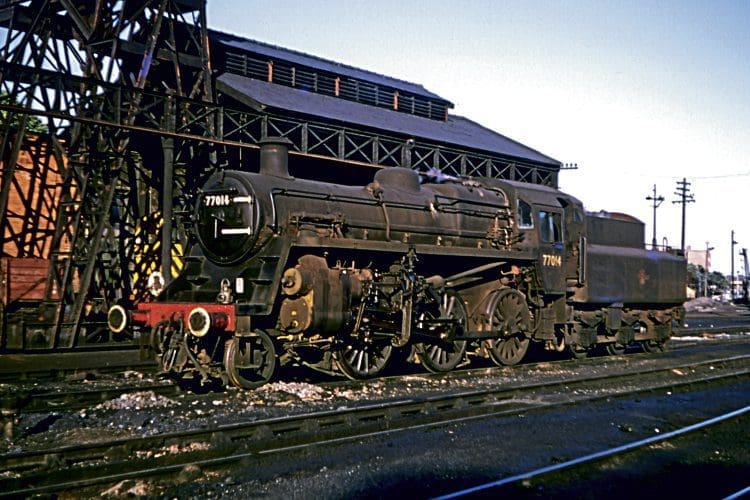
On Nationalisation he became mechanical and electrical engineer, Doncaster, for the Eastern and North Eastern regions and in July 1951 he was moved to a similar position at Derby, succeeding H G Ivatt, but Harrison was not in favour of the disproportionate influence of LMS people on early BR locomotive policy.
Read more News and Features in Issue 244 of HR – on sale now! Any archive enquiries? Contact Jane Skayman on 01507 529423 or email [email protected]
It was Harrison who was responsible for much of the design work on Duke of Gloucester, giving it Caprotti valve gear. Despite having a Britannia boiler and all the normal BR Standard features, No. 71000 clearly showed much Gresley LNER influence, being a three-cylinder Pacific.
Riddles’ intention had been that it would be a big Britannia, with two cylinders, but this had proved impractical as the two cylinders would have had to be too big.
The three cylinder design was therefore forced on Riddles, who was reluctant to accept it in view of known problems with three cylinder Pacifics on the LNER. However, it was the use of Caprotti valve gear that was the factor that allowed the project to go ahead.
Design of the draughting arrangements was subcontracted to Swindon, but despite advice to use a Kylchap exhaust system to deal with the sharp exhaust of Caprotti valve gear, Swindon fitted a standard double chimney, before Riddles could stop them, and it proved to be one of the design’s Achilles heels.
Never a popular engine, it nevertheless came out of trials for thermal efficiency extremely well, but it was never honed to perfection by BR and in preservation, some other quite major design and construction faults were discovered and it is only recently that correction of these has allowed the engine to realise its full potential.
9F 2-10-0
The last in the series of BR Standard classes, the 9F was intended for use on fast, heavy long-distance freight workings. Although the design was shared between Brighton and Doncaster in 1953, the 251 2-10-0s were built at Crewe and Swindon, and allocated to the ER, NER and LMR at first with the last batches going to the WR.
Externally similar to a Britannia Pacific, the actual design was very different, with few parts common to both classes; in fact the 9F has surprisingly little in common with any of the other Standard classes.
It was the ER’s motive power officer, L P Parker, who made the case for a new design of powerful freight locomotive, able to shift heavy loads at fast speeds in round trips between distant destinations within the eight-hour shift of the footplate crew.
Riddles took up the challenge, initially designing a 2-8-2, but settled upon the 2-10-0 wheel arrangement for the increased traction and lower axle load that five coupled axles can provide.
The centre driving wheels had no flanges, and those on the second and fourth coupled wheels were reduced in depth, to enable the locomotives to round curves more easily.
The 9F 2-10-0s were particularly successful. Although capable of the slow heavy freight haulage to be expected of Britain’s most powerful steam engine, they were also capable of 90mph running.
Ten of the 9Fs built in 1955, Nos. 92020-92029, carried Franco-Crosti boilers. These incorporated a combustion gas feed water preheater that recuperated low-grade residual heat.
In the 9F version, this took the form of a single cylindrical water drum running along the underside of the main boiler barrel. The standard chimney on top of the smokebox was only used during lighting up.
In normal working, the gases went through firetubes inside the preheater drum that led to a second smokebox situated beneath the boiler from which there was a second chimney on the right-hand side, just in front of the firebox.
Although widely used in Italy, the system was not found to be particularly benefial and did not justify the additional cost.
With a chimney right in front of the cab, footplate conditions were unpleasant and the second boilers and chimneys were quickly removed. The 10 locomotives remained very different in appearance to the rest of the class though, with no smoke deflectors and they lasted in service almost to the end of steam.
The last of the 999 BR Standards to be built was a 9F; No. 92220 turned out from Swindon in May 1960, named Evening Star and painted in express lined green livery; something Riddles would have disapproved of.
Withdrawals started early as dieselisation took hold in many areas and there was little alternative use for the 9Fs. Nevertheless many lasted into 1968 and a few made it almost to the end of steam in August that year.
The end of steam
Mention must be made of Ronald Jarvis, credited with rebuilding Bulleid’s already good Pacifics into something outstanding in the 1950s. Jarvis was the eldest son of the founder of the civil engineering company Jarvis.
He was born on November 5, 1911 in Harpenden and apprenticed at Derby works under H G Ivatt at the same time as HAV Bulleid, the son of Oliver Bulleid. He was involved in the introduction of the LMS three-car diesel units.
During the Second World War, he was sent to Turkey to oversee the assembly of the Stanier 8Fs, and then accompanied Stanier to India.
After the war he worked briefly under Ivatt who was by then CME of the LMS, but on Nationalisation became chief technical assistant at Derby, in which post he represented the LMR on the committee which investigated the results of the 1948 Locomotive Exchanges.
He moved to Brighton works on the Southern Region where he took over from Oliver Bulleid, and was involved in the design of the Standard 4MT 4-6-0s and 2-6-4Ts. He also contributed to the design of the 9F, including the Franco-Crosti boilered version.
Jarvis redesigned Bulleid’s Pacifics, maintaining their free-steaming capabilities but improving their reliability and drastically reducing maintenance costs. The air-smoothed casing, steam reverser and chain-driven valve gear were removed and the engines were given an external appearance closely based on the BR Standard range.
Despite his lifelong interest in steam locomotives, he took an interest in newer forms of traction including the electric and electro-diesel locomotives on the Southern Region. Jarvis returned to Derby to oversee the development of the Class 43 High Speed Train power cars.
Robert Riddles retired in 1953 on the abolition of the Railway Executive, and became a director of Stothert & Pitt, cranemakers of Bath. Roland Bond became chief mechanical engineer, BR Central Staff.
J F Harrison took over from Bond in 1958, but never had the opportunity to design new steam locomotives in this position and effectively took charge of the phasing out of BR steam. He retired on September 14, 1966.
Not long after Riddles’ retirement, British Railways finally decided to proceed with the rapid conversion to diesel traction, as laid out in the Modernisation Plan of 1955. Many of the planned orders for BR Standard steam engines were cancelled, with only 999 being built. Most were scrapped with years of useful life left in them.
Riddles could easily have been the last CME on the LMS but Ivatt won that contest. Riddles basically developed Ivatt’s designs in many cases but in a rather more stylish way.
They may not have been to everyone’s taste, but Britain’s last steam designs, the BR Standard range consisted of some of the most handsome and modern-looking engines to have run in this country.
He had started with Austerity designs during the war; designs which stood the test of time far better than they had been intended to. His two-cylindered Pacific was a radical departure from anything which had run before and never got much chance to prove itself.
The one-off three-cylinder Caprotti Pacific was potentially good, if not the best Pacific ever to run in Britain but was never honed to its maximum potential by BR.
Riddles died on June 18, 1983, aged 92.
He had designed the last main line steam locomotive to be built for British Railways and the engine which hauled BR’s last steam-hauled passenger train.
Maybe BR should never have let him design and build his 999 engines but they were generally very successful in the new postwar railway operating circumstances and worthy of their position as Britain’s last major series of steam engines.
For more, like us on Facebook, or follow us on Twitter here.
Read more News and Features in Issue 244 of HR – on sale now! Any archive enquiries? Contact Jane Skayman on 01507 529423 or email [email protected]
Advert
 Enjoy more Heritage Railway reading in the four-weekly magazine. Click here to subscribe.
Enjoy more Heritage Railway reading in the four-weekly magazine. Click here to subscribe.











